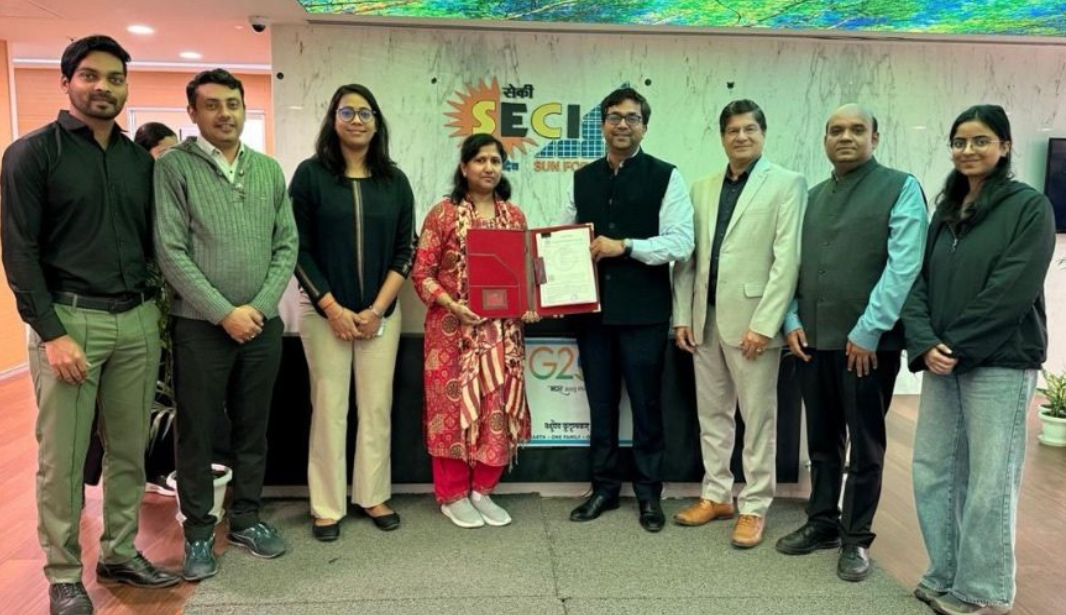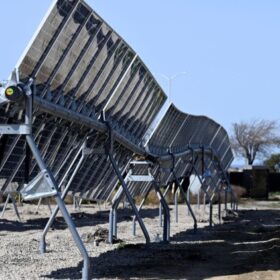A research group from Ghana has developed a solar PV-powered steam cooker (ISESC) with sand-based thermal energy storage (TES).
“The potential of sand, given its thermal stability and low cost, has not been widely investigated. Existing research primarily utilizes diodes, resistive heaters, or induction systems as heat sources, with limited exploration of direct steam generation using stored heat in the sand,” the academics said. “The integration of steam cooking with sand-based TES in solar PV-electric systems is a novel area, and its efficiency in steam production and food cooking remains unclear.”
The tested setup comprises 20 photovoltaic (PV) modules, each with a maximum capacity of 580 W and an efficiency of 22.65%. The modules are mounted on a ground structure with a tilt angle of 10° facing south and an azimuth angle of 0°. The electricity generated is directed to the thermal energy storage (TES) system, which consists of two components: a mild-steel sand container filled with quarry sand, in which a DC resistive heating element is embedded.
Above the sand layer, a water chamber containing 10 kg of water is installed, generating steam that heats the food within the cooking enclosure. The cooking chamber measures 143 cm in height, 150 cm in length, and 57.5 cm in width, while the thermal battery dimensions are 15 cm × 65.5 cm × 44 cm.
Testing was conducted at Kunst Senior High School in Kumasi, Ghana. Water boiling tests were performed daily from October 21 to 24, 2024, between 10:00 am and 3:00 pm. Cooking trials followed from November 5 to 7, 2024. Instruments used included a solar radiation meter, an infrared temperature gun, a voltmeter, an ammeter, and a thermal camera.
Results showed that the cooking chamber reached temperatures of 105–110 C, sufficient to cook 16 kg of rice in 80 minutes, 16 kg of beans in 140 minutes, and 32 kg of plantain in 85 minutes. The ISESC achieved a thermal efficiency of 38.9%, exceeding the performance of Scheffler dish solar steam systems (25–26.5%) by approximately 12–14% under similar conditions. The sand-based TES stored 13–15 MJ of energy, providing 4–6 hours of reliable cooking even under variable solar radiation of 400–900 W/m².
Lifecycle cost analysis indicated a payback period of 4.5 years, with total costs over 20 years estimated to be 47% lower than those of traditional biomass stoves. The ISESC’s annual emission savings were calculated as 5,312.22 kg of CO₂, 11.10 kg of NOx, and 7.05 kg of PM2.5, contributing to reduced deforestation, lower indoor air pollution, and support for Ghana’s nationally determined contribution (NDC) targets.
The system was described in “Experimental analysis of an institutional solar PV-powered steam cooker with sand-based thermal energy storage,” published in Solar Energy Advances. Scientists from Ghana’s Kwame Nkrumah University of Science and Technology, Technology Consultancy Centre – International Centre for Innovation, Manufacturing, Technology Transfer, and Entrepreneurship (TCC-CIMET), and Cape Coast Technical University.
This content is protected by copyright and may not be reused. If you want to cooperate with us and would like to reuse some of our content, please contact: editors@pv-magazine.com.








By submitting this form you agree to pv magazine using your data for the purposes of publishing your comment.
Your personal data will only be disclosed or otherwise transmitted to third parties for the purposes of spam filtering or if this is necessary for technical maintenance of the website. Any other transfer to third parties will not take place unless this is justified on the basis of applicable data protection regulations or if pv magazine is legally obliged to do so.
You may revoke this consent at any time with effect for the future, in which case your personal data will be deleted immediately. Otherwise, your data will be deleted if pv magazine has processed your request or the purpose of data storage is fulfilled.
Further information on data privacy can be found in our Data Protection Policy.